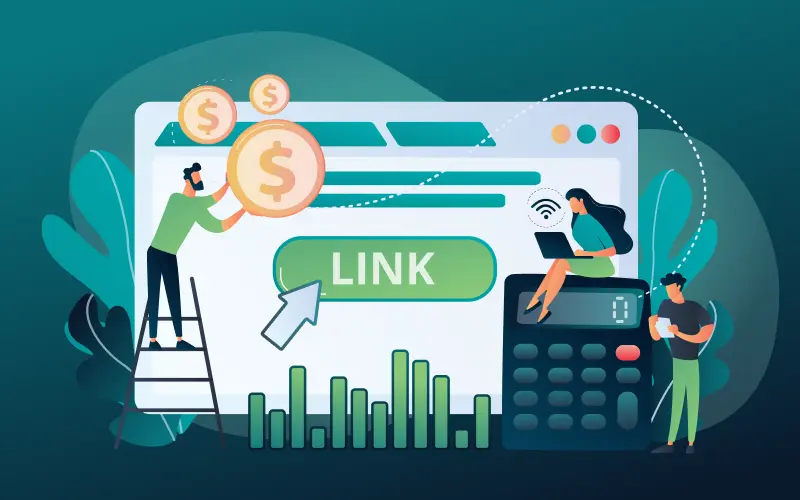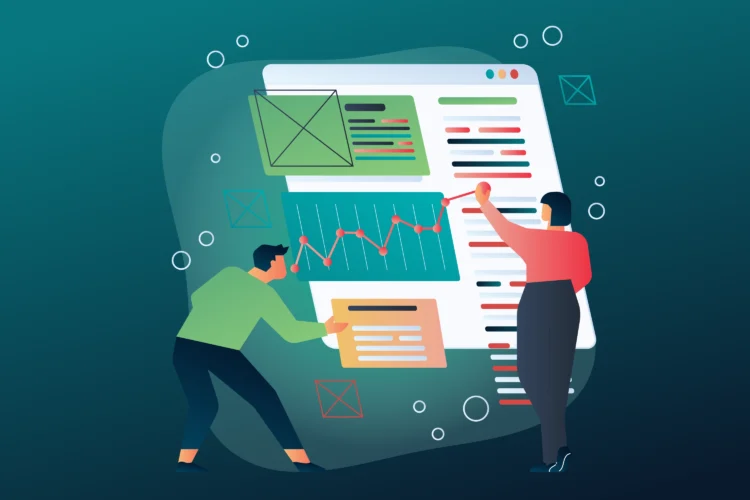
Did you know SaaS companies can pay $10–$50 per click on Google Ads? With costs that high, every wasted click hurts. Getting traffic is easy. Turning those clicks into real pipeline for your SaaS is the real challenge. Many teams spend thousands on ads that look good on the surface but fail to deliver signups, demos, or paying users.
The good news is that PPC for SaaS can be one of the fastest and most reliable ways to grow if you build it around the right steps. This guide walks through the core areas where most SaaS ad campaigns fall short and how to fix them. You’ll learn how to structure campaigns by funnel stage, pick the right channels, improve ad creative, and track what really matters.
Why PPC Matters for SaaS Growth
Running PPC for SaaS companies is one of the fastest ways to grow pipeline. Unlike SEO, which can take months to show results, paid ads give you visibility right away. For SaaS teams that need to scale trials, demos, or freemium users, that speed is hard to beat.
What makes B2B SaaS PPC different from consumer advertising is the sales cycle. You’re not selling a one-click product. Buyers usually compare tools, involve multiple decision-makers, and take weeks or months before signing a contract. That means your campaigns can’t just chase clicks. They need to guide people through stages of awareness, education, and proof before conversion.
Done well, PPC gives you control over who sees your offer, when they see it, and what action they take next. It also produces clear data so you can test, improve, and scale based on what actually drives revenue.
A Framework to Optimize SaaS PPC Campaigns
Instead of guessing which tweaks might work, it’s better to follow a repeatable process. Think of it as a checklist you can run every time you want to improve results. Each step builds on the previous one, so you can cut waste, focus on what matters, and grow with confidence.
Step 1 – Audit Current Performance
The first step in optimizing PPC for SaaS is auditing campaigns for wasted spend. Before making changes, you need a clear picture of where money is going and which clicks are actually driving results.
Start by reviewing your search terms and audience reports. Look for irrelevant keywords or placements that burn budget without producing signups or demos. Add negative keywords where needed and tighten audience filters to reduce noise.
Next, map spend against the funnel. Are you paying too much for top-of-funnel traffic while bottom-of-funnel campaigns are underfunded? Many teams discover that budget is skewed toward clicks that rarely convert.
Finally, check your tracking setup. If conversions are only measured at the form-fill level, you’re missing the bigger picture. Connect your ad platforms to your CRM so you can trace spend all the way to pipeline and revenue. This not only shows which campaigns are worth keeping, it also reveals where to double down.
Step 2 – Align Campaigns With the Funnel
Once the audit is complete, the next step is making sure your ads match the buyer journey. Many campaigns fail because they push the same message to everyone, no matter where they are in the funnel.
At the top of the funnel, people are just learning about solutions. They respond better to ads that promote helpful resources, guides, or webinars. Platforms like LinkedIn are strong here, especially when targeting by job title or industry.
In the middle of the funnel, prospects are comparing options. This is where B2B SaaS PPC shines with feature-based keywords, competitor comparison pages, or retargeting ads that show case studies and customer proof.
At the bottom of the funnel, your audience is closer to making a decision. Here, branded search, direct demo ads, and pricing page retargeting work best. The key is to make each stage feel like a natural step toward conversion, instead of forcing the same offer on everyone.
Step 3 – Optimize Targeting
Targeting is where PPC either wins or loses. You can have strong ad copy and polished landing pages, but if the wrong people are seeing them, the budget will disappear fast.
LinkedIn Ads for SaaS make it possible to filter audiences by job title, company size, and industry. This is especially useful in B2B, where one misplaced click from the wrong role can cost as much as a high-value lead. Use these filters to isolate decision-makers and reduce wasted spend.
On Google, take advantage of in-market audiences, custom intent audiences, and detailed demographic filters. Combine them with negative keywords to prevent your ads from showing up for irrelevant queries.
Retargeting also plays a big role. Segment users based on behavior: someone who visited your pricing page is much closer to converting than someone who only read a blog post. Serve each group ads that match their intent, and move them forward instead of restarting the conversation.
Step 4 – Improve Ad Creative
Strong targeting gets you in front of the right people, but it is the creative that earns the click. In PPC for SaaS, ad copy and visuals should highlight benefits quickly and clearly. Buyers want to know how your product solves their problem, not read through vague promises.
Keep headlines simple and action-driven, such as “Cut Reporting Time in Half” or “Start Your Free Trial Today.” Pair them with short descriptions that focus on value rather than listing every feature. On platforms like LinkedIn, use visuals that reflect the buyer’s daily work environment so the ads feel relevant.
Testing matters too. Rotate several versions of headlines, calls to action, and images to see what performs best. Even a small change, like adjusting wording on a button, can improve click-through rates and reduce acquisition costs.
Step 5 – Fix and Test Landing Pages
Every click you pay for needs a page that can convert. Too many campaigns lose money because the landing page is confusing, slow, or full of distractions.
Keep each page focused on one goal. If the ad promises a free trial, the page should make it easy to start that trial without digging around. Short forms with only the required fields work better than long ones. Clear headlines that match your ad copy reassure visitors that they are in the right place.
Trust signals are also important. Add testimonials, client logos, or case study highlights to build credibility. Make sure the page loads quickly and is easy to use on mobile, since a slow or clunky experience pushes visitors away.
Finally, keep testing. Try new headlines, layouts, button text, or even colors. Small adjustments can improve conversion rates over time, and testing ensures you know what actually works instead of guessing.
Step 6 – Measure What Matters
Click-through rates and impressions are easy to track, but they do not always tell you if your campaigns are driving real growth. The metrics that matter most in SaaS are those tied to cost per lead, customer acquisition cost, and lifetime value.
Set up conversion tracking that follows leads beyond the first click. Connect ad platforms with your CRM so you can see which campaigns generate demo bookings, product signups, and paying customers. Without this link, it is impossible to know if your spend is profitable or just generating noise.
Look at both micro and macro conversions. Micro conversions, like downloads or signups, show early interest. Macro conversions, like closed deals, show true return. By combining both, you can optimize faster while keeping a long-term view.
Every B2B SaaS PPC campaign should connect ad spend directly to pipeline revenue.
Best Practices for B2B SaaS PPC
The best practices below apply to any PPC for SaaS campaign, regardless of budget or channel. They are the difference between campaigns that just spend money and campaigns that generate real ROI.
Start by matching your ads to the funnel stage. Top of funnel campaigns should focus on education and value, while bottom of funnel campaigns push for demos or trials. Tracking must go beyond counting leads and connect ad performance directly to revenue so you know what is working.
Keep creative fresh to avoid fatigue, and never send clicks to a generic homepage. Instead, build landing pages tailored to the audience’s intent. Finally, make retargeting part of your core strategy. Most SaaS buyers need multiple touches before they convert, and retargeting keeps you top of mind.
SaaS PPC Optimization by Channel
Not every platform plays the same role in a SaaS PPC strategy. Some are built for bottom of funnel intent, while others are better at building awareness and filling the pipeline. The two channels that matter most for B2B SaaS marketers are Google Ads and LinkedIn Ads.
Google Ads for SaaS
Google Ads for SaaS is usually the foundation of a paid strategy because it captures buyers already searching for solutions. These campaigns cover branded terms, competitor bidding, and high intent feature keywords like “CRM with reporting” or “SaaS analytics tool.”
Different campaign types serve different purposes. Search campaigns capture demand, Display helps with remarketing, and Performance Max combines Google’s inventory into one campaign that uses machine learning to distribute spend across channels. For SaaS, Performance Max can work well when you feed it strong creative assets and conversion data.
In short, Google Ads for SaaS is where you target bottom of funnel prospects who already show intent, while keeping a share of spend available for retargeting and brand defense.
LinkedIn Ads for SaaS
LinkedIn Ads for SaaS give you precision targeting that is hard to find elsewhere. You can filter by job title, company size, industry, or even specific accounts, which makes it ideal for account based marketing.
Targeting tips include narrowing your audience to decision makers, layering in firmographics, and excluding irrelevant roles to avoid wasted spend. Popular ad formats for SaaS include single image ads, carousel ads for product features, and Lead Gen Forms that capture data without leaving LinkedIn.
Because CPCs are higher, LinkedIn Ads for SaaS work best when used for middle and bottom of funnel campaigns where quality matters more than volume.
Common Mistakes to Avoid
Even with the right strategy, campaigns can fall short because of avoidable execution mistakes. One of the biggest is sending all traffic to the homepage instead of a landing page tailored to the campaign. A homepage asks visitors to do too much work, while a focused page guides them toward a single action. A common mistake in PPC for SaaS is ignoring this rule and losing conversions as a result.
Another common mistake is measuring success by leads alone. Form fills and MQLs are easy to track, but they don’t prove revenue impact. Without connecting campaigns to pipeline, it’s impossible to know what is actually driving growth.
Over-reliance on a single channel is another pitfall. Teams often default to Google Ads and ignore LinkedIn or other platforms, which limits reach and exposes campaigns to rising costs. Running the same ads without refreshing creative makes the issue worse, leading to ad fatigue that drags performance down.
Finally, poor filtering wastes budget. Weak negative keyword lists in search or sloppy audience exclusions in social ads allow irrelevant clicks to slip through. Sharper filters not only protect spend but also improve lead quality. Avoiding these mistakes keeps campaigns running efficiently and makes it easier to scale.
Final Takeaway
SaaS PPC works best when every part of the campaign ties back to business goals. Clear targeting, strong creative, and proper tracking separate campaigns that waste spend from those that fuel real growth. If you want sharper results, start by auditing what you already have, then apply the frameworks and best practices we’ve covered.
When managed strategically, PPC for SaaS can become a predictable growth driver. Optimizing B2B SaaS PPC across Google and LinkedIn ensures your campaigns deliver more demos, trials, and revenue.
Ready to put these ideas into action? Book a free strategy call with our team and start building campaigns that actually scale.








